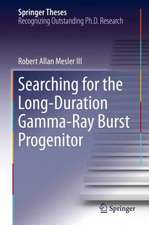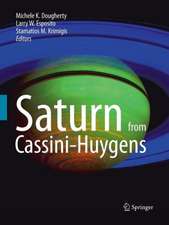Fatigue in Aviation: A Guide to Staying Awake at the Stick
Autor John Caldwell, J. Lynn Caldwellen Limba Engleză Hardback – 27 mai 2016
Preț: 579.09 lei
Preț vechi: 681.27 lei
-15% Nou
Puncte Express: 869
Preț estimativ în valută:
110.90€ • 113.17$ • 93.30£
110.90€ • 113.17$ • 93.30£
Carte tipărită la comandă
Livrare economică 26 februarie-12 martie
Preluare comenzi: 021 569.72.76
Specificații
ISBN-13: 9781472464590
ISBN-10: 1472464591
Pagini: 178
Dimensiuni: 156 x 234 x 15 mm
Greutate: 0.4 kg
Ediția:Revised
Editura: CRC Press
Colecția Routledge
ISBN-10: 1472464591
Pagini: 178
Dimensiuni: 156 x 234 x 15 mm
Greutate: 0.4 kg
Ediția:Revised
Editura: CRC Press
Colecția Routledge
Public țintă
Professional Practice & DevelopmentCuprins
Contents: Part I The Problem of Fatigue: Introduction; An overview of fatigue. Part II Causes of Fatigue: The nature of fatigue; The processes underlying sleepiness (fatigue) and alertness; Circadian rhythms; Sleep facts; Sleep disorders; Other factors associated with sleep difficulties. Part III Countermeasures for Fatigue: The need for fatigue countermeasures; Sleep optimization: the first-line fatigue countermeasure; Anti-fatigue strategies for shift lag and jet lag; Anti-fatigue strategies for situations involving sleep restriction; Issues to consider when launching a program of fatigue management. References and suggested readings; Index.
Recenzii
Comments on previous edition: 'The Caldwells have written an easy to read book that translates scientific findings on fatigue into practical and effective strategies that will improve alertness and performance in flight ops. Aviation professionals--including flight crew, cabin crew, maintenance personnel, schedulers, safety professionals, and all levels of managers--should read this excellent book and use the information to reduce known fatigue-related risks and enhance flight safety.' Mark R. Rosekind, President and Chief Scientist, Alertness Solutions and Former Director, NASA Fatigue Countermeasures Program, USA '...by means of practical examples, some very lively, the scientific jargon surrounding the issue of fatigue becomes very familiar...very interesting' Aerlines Magazine June 2004 'Fatigue in Aviation is wholeheartedly recommended - for flight crews and everyone else in aviation whose work impacts the lives of others: security; maintenance; emergency services; airline management; air traffic control....and, indeed, for anyone who's ever had a bad night's sleep.' The Aerospace Professional, August 2005
Descriere
Fatigue and sleep definitions as well as strategies for the measurement and assessment of fatigue are in this updated edition, and aviation performance, mood, and safety problems associated with sleep restriction and circadian disruptions in operational settings are highlighted. In addition there is an essential overview of Fatigue Risk Management Systems. Readers have a 'toolbox' from which they can choose the best solutions for the fatigue-related problems that exist in their unique operational context.


























